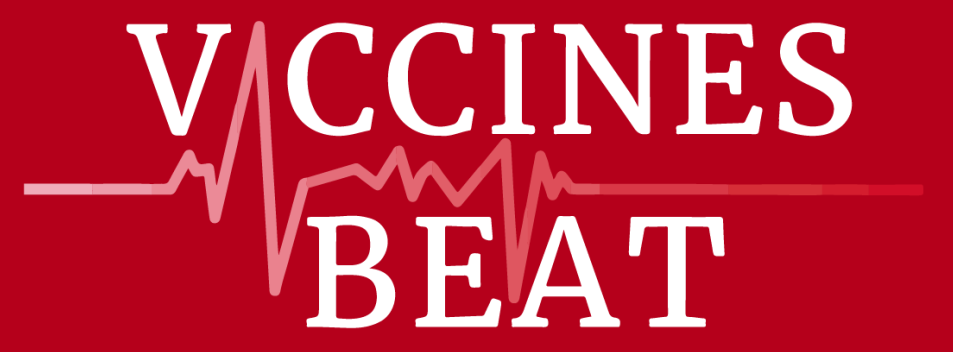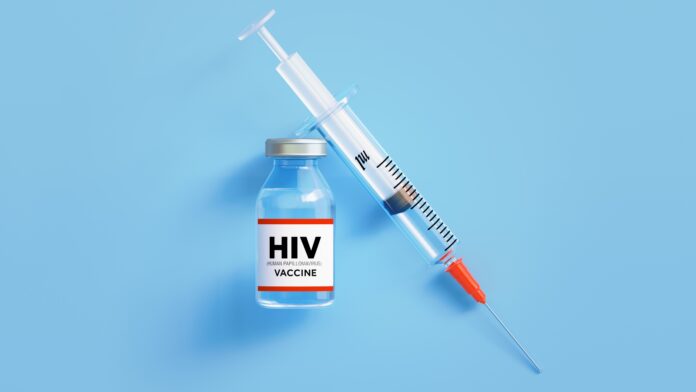Introduction:
HIV-1/AIDS remains one of the most pressing global health challenges. Despite significant advances in prevention and treatment, the epidemic continues to affect millions worldwide. As of 2023, an estimated 40 million people were living with HIV-1. Although new infections have declined by more than half since their peak in 1995, more than one million new cases were still reported in 2023.
Since the beginning of the epidemic, approximately 88.4 million people have been infected with HIV-1, and 42.3 million have died from AIDS-related illnesses—including 630,000 deaths in 2023 alone. These figures underscore the ongoing need for sustained global efforts in prevention, treatment, and research.
Antiretroviral therapy (ART) has dramatically improved both the quality of life and life expectancy for individuals living with HIV-1. However, it is not a cure. ART typically involves a combination of two to four medications that target different stages of the HIV-1 life cycle. This approach enables patients to maintain undetectable viral loads and preserve healthy CD4+ T cell levels. Importantly, ART also significantly reduces the risk of HIV-1 transmission between individuals.
Despite its proven effectiveness and growing global availability, substantial barriers to accessing ART remain—particularly in low- and middle-income countries. Moreover, lifelong adherence is required, and long-term use can lead to drug-related toxicity and an increased risk of comorbidities.
These challenges highlight the urgent need for a preventive HIV vaccine—one that could reduce transmission, lower the incidence of new infections, and contribute to long-term control and eventual eradication of the virus.
2. The HIV Vaccine Journey: A Story of Limited Success and Ongoing Challenges:
The first HIV-1 vaccine Phase I clinical trial began in 1987, but early candidates, such as the gp160 subunit vaccine, showed no significant efficacy.
In 1998, the first large-scale, randomized, double-blind, placebo-controlled HIV-1 vaccine trial—VAX004—was launched in the United States and Europe. This Phase 3 trial evaluated the AIDSVAX B/B vaccine, which consisted of two recombinant gp120 envelope (Env) proteins derived from subtype B isolates MN and GNE8. Unfortunately, upon its conclusion in 2003, the study demonstrated no efficacy in preventing HIV-1 infection or reducing plasma viremia levels.
A parallel Phase 3 trial, VAX003, was conducted in Thailand using a different formulation: AIDSVAX B/E, which combined gp120 Env proteins from clade B (MN) and clade E (A244). Like VAX004, this trial also failed to show any significant protection against HIV-1 infection.
Similar failed results were found with the STEP and Phambili trials with a vaccine developed by Merck.
The first ray of hope in the decades-long HIV-1 vaccine effort came with the RV144 trial, also known as the “Thai Trial.” This Phase 3 study, conducted in Thailand beginning in 2003, enrolled over 16,000 volunteers and tested a prime-boost regimen combining two vaccines: ALVAC-HIV (a canarypox vector encoding HIV-1 env, gag, and pol) and AIDSVAX B/E (a gp120 subunit vaccine). When results were announced in 2009, they were groundbreaking—the vaccine regimen demonstrated a modest 31.2% reduction in HIV-1 infection compared to placebo. Although the level of efficacy was not sufficient for licensure, RV144 marked the first time any HIV-1 vaccine had shown protective effects in humans. This modest success rekindled hope and provided crucial insights into the immune responses that might be required for protection.
Building on RV144, the HVTN 702 (Uhambo) trial was launched in South Africa to test a modified version of the regimen adapted to clade C viruses. Unfortunately, the trial was stopped early after interim analysis showed no efficacy in preventing HIV-1 infection.
Similarly, the Imbokodo and Mosaico trials (2021–2023), which evaluated mosaic immunogen-based vaccines developed by Janssen to target a broad range of HIV-1 strains, also failed to demonstrate protective efficacy.
Despite these setbacks, each of these trials has contributed significantly to our understanding of HIV-1 vaccine science. They have clarified that binding antibodies and traditional cellular immune responses alone are insufficient for robust protection. Instead, the field now recognizes that eliciting broadly neutralizing antibodies (bNAbs)—capable of neutralizing diverse HIV-1 strains across clades—will likely be critical for achieving effective and durable immunity.
One of the major obstacles in developing an effective HIV-1 vaccine is the virus’s extraordinary genetic diversity. Multiple subtypes and strains circulate globally, posing a significant challenge for vaccine design. This diversity stems from HIV-1’s high mutation rate—estimated at approximately 3.4 × 10⁻⁵ mutations per base per replication cycle—driven by the error-prone nature of reverse transcriptase, which lacks proofreading capability. As a result, millions of variants of the Env protein can emerge within a single infected individual in just one day, enabling the virus to rapidly escape immune pressure and hindering the development of broadly protective vaccines.
Another key obstacle in HIV-1 vaccine development is the incomplete understanding of correlates of protection. This gap stems largely from the lack of a successful clinical trial from which to derive meaningful immunological insights—a void that persisted until the RV144 study. Even then, the correlates identified were modest and not definitive.
Complicating matters further, individuals infected with HIV-1 may generate antibodies or exhibit CD4+ T cell activation without achieving protective immunity, making it difficult to define clear physiological benchmarks for protection. Adding to the challenge, the generation of effective primary antibody responses and cytotoxic T cell responses requires assistance of CD4+ T cells. However, HIV-1 specifically targets and downregulates CD4 expression on these helper T cells, impairing their function. Moreover, we currently lack reliable biomarkers to accurately measure the supportive role of CD4+ T cells in coordinating immune responses during HIV-1 infection or vaccination.
Future direction for vaccine development:
1. Immunization with SOSIP Trimers
The introduction of an artificial disulfide bond linking the gp120 and gp41 subunits (referred to as SOS), combined with the I559P (IP) mutation, has enabled detailed structural characterization of soluble gp140 (sgp140) trimers. These SOSIP trimers closely mimic the native conformation of the HIV-1 Env trimer, a critical feature for eliciting bNAbs. Through computational and structure-guided design, multiple additional stabilizing mutations have been incorporated to enhance trimer stability and lock it into a closed, native-like state.
2. Germline-Targeting (GT) Immunization
One of the most promising new strategies, heavily reliant on SOSIP technology, is germline-targeting (GT) immunization. Broadly speaking, successful GT immunization involves administering a series of immunogens designed first to recruit naïve B cells into germinal centers (GCs), followed by sequential booster immunizations that guide these B cells to mature and produce bNAbs.
3. mRNA-Based Vaccines
Unlike traditional vaccines, which often use weakened or inactivated viruses to stimulate an immune response, mRNA vaccines deliver a small piece of the virus’s genetic material. This mRNA instructs cells to produce a viral protein that triggers the immune system, priming the body to recognize and combat the pathogen upon exposure.
The application of mRNA technology to HIV-1 vaccine development is especially promising for several reasons:
- Rapid development and adaptability: mRNA vaccines can be designed and manufactured much faster than traditional vaccines. This agility is critical for addressing the genetic diversity and rapid mutation rate of HIV-1. Researchers can quickly update the mRNA sequence to match emerging HIV-1 strains, potentially improving efficacy while maintaining safety.
- Robust immune response: mRNA vaccines elicit strong cellular and humoral immunity by enabling direct antigen production within host cells, outperforming many protein- or peptide-based vaccines. For HIV-1, this means enhanced stimulation of antibody production and T cell responses targeting the virus. Early-stage clinical trials of mRNA HIV-1 vaccines have demonstrated encouraging immune activation, including cytotoxic T cell activity, paving the way for further development.
- Induction of broadly neutralizing antibodies (bNAbs): A key goal in HIV-1 vaccine research is to induce bNAbs that can neutralize a wide array of viral strains. mRNA vaccines can be engineered to express specific HIV-1 proteins known to elicit these potent antibodies, potentially offering broad and durable protection.
Currently, several mRNA-based HIV-1 vaccine candidates are in various stages of clinical evaluation, reflecting the promise of this innovative approach.
4. Nanoparticle Vaccines
Nanoparticle vaccines employ tiny particles—often composed of proteins, lipids, or other materials—to deliver multiple antigens or nucleic acids to the immune system. By mimicking the structural features of viruses, these nanoparticles enhance immune activation by presenting genetic material in a manner that closely resembles natural infection. Their versatility is reflected in the diverse types of nanoparticles used, including inorganic particles, lipid nanoparticles (LNPs), biopolymer particles, virus-like particles (VLPs), and recombinant antigens. Importantly, nanoparticles provide a safe and effective alternative to live-attenuated viruses, which are generally considered too risky for use in HIV-1 vaccine development.
5. Gene Therapy in HIV-1
Gene therapy, which involves delivering therapeutic genetic material (such as DNA or RNA) to cells or tissues, has achieved remarkable progress in cancer treatment. One promising application for HIV-1 is chimeric antigen receptor T (CAR T) cell therapy, offering a highly adaptable strategy for HIV-1 immunotherapy. CAR T cells can be engineered to recognize and bind the gp120 envelope protein expressed on the surface of HIV-1-infected cells. By targeting gp120, these modified T cells are designed to direct the immune system to specifically identify, attack, and eliminate HIV-1-infected cells, providing a targeted approach to control or potentially eradicate the virus.
6. Viral Vector-Based Expression of broadly neutralizing antibodies (bNAbs)
The concept of using viral vectors to express bNAbs originated from the success of passive immunization in controlling HIV-1 replication. To build on this approach, researchers developed recombinant adeno-associated viral (rAAV) vectors capable of delivering genes that enable persistent, long-term expression of bNAbs and other HIV-1 inhibitors. This strategy has demonstrated promising results in both preclinical models and early clinical trials.
7. Extracellular Vesicles
The use of extracellular vesicles (EVs) in HIV-1 therapy and vaccine development represents a rapidly advancing area of research with significant potential. EVs are phospholipid-bound organelles released from cell surfaces that play a crucial role in cell-to-cell communication by safely packaging and delivering biological cargo—such as proteins, DNA, and RNA—to target cells and tissues. Leveraging these unique properties, researchers are exploring EVs as tools to reactivate and eliminate latent HIV-1 reservoirs through a “shock-and-kill” strategy. By engineering EVs to specifically target HIV-1-infected CD4+ T cells and deliver key activating molecules, this approach aims to awaken dormant virus reservoirs, making them susceptible to immune clearance.
5. Conclusions
In summary, recent advancements in HIV-1 vaccine and treatment strategies offer significant promise in the ongoing battle against the virus. Continued research and clinical trials are essential to refine these approaches and to integrate emerging and future technologies. Furthermore, stronger global collaborations and partnerships are crucial to increasing investment in combating this persistent and ever-evolving disease, which affects populations worldwide— particularly in low- and middle-income countries where the burden remains greatest.
Bibliography:
- Boomgarden AC, Upadhyay C. Progress and Challenges in HIV-1 Vaccine Research: A Comprehensive Overview. Vaccines (Basel). 2025 Jan 31;13(2):148. doi: 10.3390/vaccines13020148.
- UNAIDS and AIDS Statistics: Fact Sheet – 2023. https://www.unaids.org/en/resources/fact-sheet
- Landovitz RJ, Scott H, Deeks SG. Prevention, treatment and cure of HIV infection. Nat Rev Microbiol. 2023 Oct;21(10):657-670. doi: 10.1038/s41579-023-00914-1.
- Chihana R, Jin Kee J, Moodie Z, Huang Y, Janes H, Dadabhai S, Roxby AC, Allen M, Kassim S, Naicker V, Innes C, Naicker N, Dubula T, Grunenberg N, Malahleha M, Kublin JG, Bekker LG, Gray G, Kumwenda J, Laher F. Factors associated with reactogenicity to an investigational HIV vaccine regimen in HIV vaccine trials network 702. Vaccine. 2024 Aug 13;42(20):125991. doi: 10.1016/j.vaccine.2024.05.039.
- NIAID/NIH Experimental HIV Vaccine Regimen Safe but Ineffective, Study Finds. [(accessed on June 25, 2025)]; https://www.nih.gov/news-events/news-releases/experimental-hiv-vaccine-regimen-safe-ineffective-study-finds.
- Barouch DH. Challenges in the development of an HIV-1 vaccine. Nature. 2008 Oct 2;455(7213):613-9. doi: 10.1038/nature07352.
- Schommers P, Gruell H, Abernathy ME, Tran MK, Dingens AS, Gristick HB, Barnes CO, Schoofs T, Schlotz M, Vanshylla K, Kreer C, Weiland D, Holtick U, Scheid C, Valter MM, van Gils MJ, Sanders RW, Vehreschild JJ, Cornely OA, Lehmann C, Fätkenheuer G, Seaman MS, Bloom JD, Bjorkman PJ, Klein F. Restriction of HIV-1 Escape by a Highly Broad and Potent Neutralizing Antibody. Cell. 2020 Feb 6;180(3):471-489.e22. doi: 10.1016/j.cell.2020.01.010.
- Escolano A, Dosenovic P, Nussenzweig MC. Progress toward active or passive HIV-1 vaccination. J Exp Med. 2017 Jan;214(1):3-16. doi: 10.1084/jem.20161765.
- Klinnert S, Schenkel CD, Freitag PC, Günthard HF, Plückthun A, Metzner KJ. Targeted shock-and-kill HIV-1 gene therapy approach combining CRISPR activation, suicide gene tBid and retargeted adenovirus delivery. Gene Ther. 2024 Mar;31(3-4):74-84. doi: 10.1038/s41434-023-00413-1.
- Tomaras GD, Plotkin SA. Complex immune correlates of protection in HIV-1 vaccine efficacy trials. Immunol Rev. 2017 Jan;275(1):245-261. doi: 10.1111/imr.12514.
- Lu CL, Murakowski DK, Bournazos S, Schoofs T, Sarkar D, Halper-Stromberg A, Horwitz JA, Nogueira L, Golijanin J, Gazumyan A, Ravetch JV, Caskey M, Chakraborty AK, Nussenzweig MC. Enhanced clearance of HIV-1-infected cells by broadly neutralizing antibodies against HIV-1 in vivo. Science. 2016 May 20;352(6288):1001-4. doi: 10.1126/science.aaf1279.
- Pugach P, Ozorowski G, Cupo A, Ringe R, Yasmeen A, de Val N, Derking R, Kim HJ, Korzun J, Golabek M, de Los Reyes K, Ketas TJ, Julien JP, Burton DR, Wilson IA, Sanders RW, Klasse PJ, Ward AB, Moore JP. A native-like SOSIP.664 trimer based on an HIV-1 subtype B env gene. J Virol. 2015 Mar;89(6):3380-95. doi: 10.1128/JVI.03473-14.
- Steichen JM, Kulp DW, Tokatlian T, Escolano A, Dosenovic P, Stanfield RL, McCoy LE, Ozorowski G, Hu X, Kalyuzhniy O, Briney B, Schiffner T, Garces F, Freund NT, Gitlin AD, Menis S, Georgeson E, Kubitz M, Adachi Y, Jones M, Mutafyan AA, Yun DS, Mayer CT, Ward AB, Burton DR, Wilson IA, Irvine DJ, Nussenzweig MC, Schief WR. HIV Vaccine Design to Target Germline Precursors of Glycan-Dependent Broadly Neutralizing Antibodies. Immunity. 2016 Sep 20;45(3):483-496. doi: 10.1016/j.immuni.2016.08.016.
- Torrents de la Peña A, de Taeye SW, Sliepen K, LaBranche CC, Burger JA, Schermer EE, Montefiori DC, Moore JP, Klasse PJ, Sanders RW. Immunogenicity in Rabbits of HIV-1 SOSIP Trimers from Clades A, B, and C, Given Individually, Sequentially, or in Combination. J Virol. 2018 Mar 28;92(8):e01957-17. doi: 10.1128/JVI.01957-17.
- Rantalainen K, Berndsen ZT, Murrell S, Cao L, Omorodion O, Torres JL, Wu M, Umotoy J, Copps J, Poignard P, Landais E, Paulson JC, Wilson IA, Ward AB. Co-evolution of HIV Envelope and Apex-Targeting Neutralizing Antibody Lineage Provides Benchmarks for Vaccine Design. Cell Rep. 2018 Jun 12;23(11):3249-3261. doi: 10.1016/j.celrep.2018.05.046.
- Doria-Rose NA, Landais E. Coevolution of HIV-1 and broadly neutralizing antibodies. Curr Opin HIV AIDS. 2019 Jul;14(4):286-293. doi: 10.1097/COH.0000000000000550.
- Lanz TV. Germline-targeting immunogens guide bnAb development. Nat Immunol. 2024 Jun;25(6):944-946. doi: 10.1038/s41590-024-01852-7.
- Ahmed S, Herschhorn A. mRNA-based HIV-1 vaccines. Clin Microbiol Rev. 2024 Sep 12;37(3):e0004124. doi: 10.1128/cmr.00041-24.
- Aikins ME, Bazzill J, Moon JJ. Vaccine nanoparticles for protection against HIV infection. Nanomedicine (Lond). 2017 Mar;12(6):673-682. doi: 10.2217/nnm-2016-0381.
- Sliepen K, Schermer E, Bontjer I, Burger JA, Lévai RF, Mundsperger P, Brouwer PJM, Tolazzi M, Farsang A, Katinger D, Moore JP, Scarlatti G, Shattock RJ, Sattentau QJ, Sanders RW. Interplay of diverse adjuvants and nanoparticle presentation of native-like HIV-1 envelope trimers. NPJ Vaccines. 2021 Aug 17;6(1):103. doi: 10.1038/s41541-021-00364-x.
- Li S, Wang H, Guo N, Su B, Lambotte O, Zhang T. Targeting the HIV reservoir: chimeric antigen receptor therapy for HIV cure. Chin Med J (Engl). 2023 Nov 20;136(22):2658-2667. doi: 10.1097/CM9.0000000000002904.
- Veeraraghavan VP, Needamangalam Balaji J, Prakash S, Prashar L, Mony U, Surapaneni KM. HIV and immunotherapy: will CAR-T cell therapy cure HIV? Int J Surg. 2023 Oct 1;109(10):3224-3225. doi: 10.1097/JS9.0000000000000556.
- Hahn PA, Martins MA. Adeno-associated virus-vectored delivery of HIV biologics: the promise of a “single-shot” functional cure for HIV infection. J Virus Erad. 2023 Feb 17;9(1):100316. doi: 10.1016/j.jve.2023.100316.
- Navarrete-Muñoz MA, Llorens C, Benito JM, Rallón N. Extracellular Vesicles as a New Promising Therapy in HIV Infection. Front Immunol. 2022 Jan 4;12:811471. doi: 10.3389/fimmu.2021.811471.







